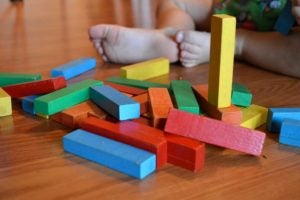
Learning Objectives
Students will be able to use their senses to observe various objects. Students will be able to sort and classify objects based on their attributes.
Grade Levels
K-1
Next Generation Science Standard
Grades K-1: Foundational Science Skills
Materials Needed
Model pictures
Sets of dog pictures (one set for each group)
Computer with internet access
Lesson
Introduction
- Gather students.
- Explain to students that in order to be a scientist, you must be able to make observations.
- Define “observe” as using your senses to gather information.
- Scientists use observations to sort and classify. Sort means to put alike things in groups and classify means to give that group a name.
Explicit Instruction/Teacher Modeling
- Model how to observe something by the way it looks. Possible questions to ask: Is it big? Is it small? What color(s) is it? What do you think it feels like?
- Show the students four pictures: a mouse, a cat, a flower and a tree.
- Describe the way each looks, their size, their colors, what they might feel like.
- Demonstrate how you observe the objects in the collection and sort them based on how they are alike. For instance, a mouse and a cat have fur. A flower and a tree do not.
Guided Practice/Interactive Modeling
- Invite your students to sit in groups. Give each group a set of pictures with various breeds of dogs. Have students sort the dogs based on their characteristics.
- Rotate around the room to observe your students as they work. Each student should check in with you once they feel that they are finished sorting and classifying their dogs.
- Ask students to choose ONE attribute they have observed in a small collection of dogs (i.e. a few of the dogs are small, a few are short, a few have short legs, etc.)
- Ask students to create a name for the collection. For instance, if the student chose a group of short dogs they might name it “Short Dogs.”
- Using resources on akc.org, have students review their groups and identify each breed. They should then determine if the collections they created match the 7 AKC groups.
Review and Closing
- Tell the students that scientists are always thinking about how things can be grouped together.
- When we are looking closely at something, or observing, we can always think about how things can be grouped together according to how they look and feel.
- This helps scientists understand the world around them.

